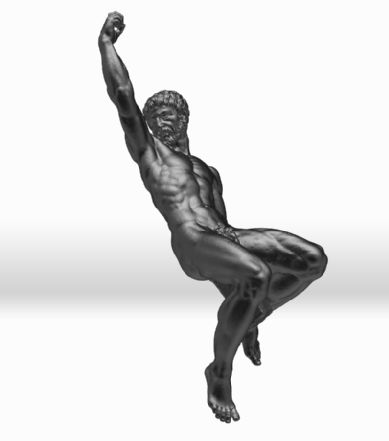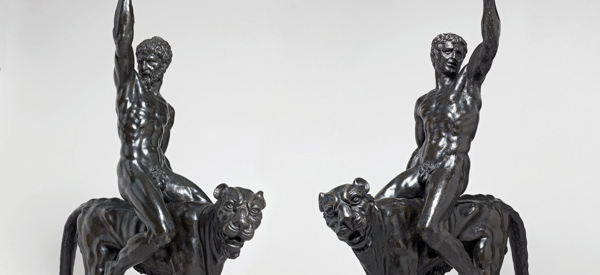For years academics have been unable to attribute a pair of unsigned and undocumented bronzes that depict one older man and one younger man. Both are nude, and both are riding panthers (hey, they don’t judge your lifestyle choices). In the 19th century, the common wisdom was that these bronzes were cast from original models by Renaissance artist Michelangelo. Over the past century or so, that attribution has been called into question and the bronzes have been attributed to a number of other sculptors.
In February, some art historians from the Fitzwilliam Museum in Cambridge made waves by claiming that the bronzes were, in fact, Michelangelo’s. And they’re using 3D scanning to help prove it.
To back their theory, the museum needs to know everything they can about the bronzes–including how they were made. To that end, the museum has enlisted the help of engineers and scanning professionals from the university of Warwick’s Warwick Manufacturing Group (WMG), who brought in raft of cutting-edge tools to examine the original pieces. In addition to 360-degree laser scanning, they performed neutron imaging, XRF analysis, and real-time x-ray videography.
In an attempt to determine how the bronzes were made, the interdisciplinary team recreated them using a number of methods.
The process began with WMG generating digital models using a high-resolution scanner. As a press release explains, these scanners are capable of capturing features below 100 microns and are “the same equipment used for scanning highly precise engineering parts, and anatomical scans of the type used for crime investigation.”
The team printed off the models at full scale and reduced scale and gave them to Andrew Lacey, who is described as a “contemporary sculptor and bronze-caster with a profound knowledge of archaeo-metallurgy.”
 Lacey created two replicas using different methods. For one, he used the traditional method of “spruing,” and for the other he used an unorthodox method that he believed was used for the bronzes. In the process, he employed alloys similar to those used in the originals and an old-fashioned furnace of the kind that Michelangelo and his contemporaries would have used.
Lacey created two replicas using different methods. For one, he used the traditional method of “spruing,” and for the other he used an unorthodox method that he believed was used for the bronzes. In the process, he employed alloys similar to those used in the originals and an old-fashioned furnace of the kind that Michelangelo and his contemporaries would have used.
Comparing these replicas to the original will give researchers a pretty good idea of how the original was created. This will, in turn, allow researchers to determine _when_ the bronzes were made. This is a necessary detail for an accurate attribution.
There’s a lot of other evidence that these were Michelangelo’s. The bronzes bear a striking similarity to a student’s copy of one of the artist’s lost sketches. The anatomical evidence is pretty strong, too. Very few artists around the time the bronzes were made could have produced a sculpture with such exact anatomy. Since no one had yet published a comprehensive and accurate anatomy text, the artist would have had to be present for a number of dissections to understand the layout of muscles portrayed in the bronze. Michelangelo would have had this knowledge.
Unfortunately, nothing is certain. We would certainly like to prove that these were created by Michelangelo, because if they were, then they are the only existing bronzes created by the master. But it becomes clear when you read about the works that art historians can get close to proving their creator but they’ll likely never do it conclusively. Are these bronzes based on Michelangelo’s models? With the help of 3D scanning and other cutting-edge research, we can now say, “probably.”






